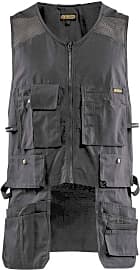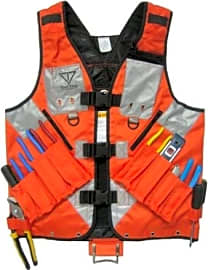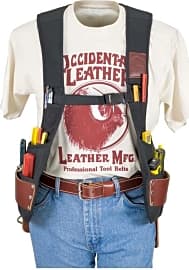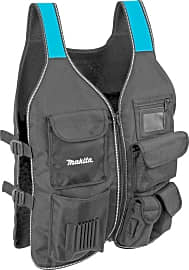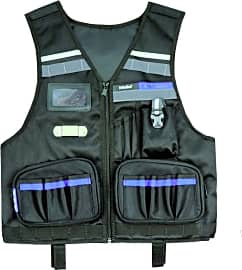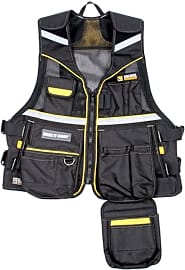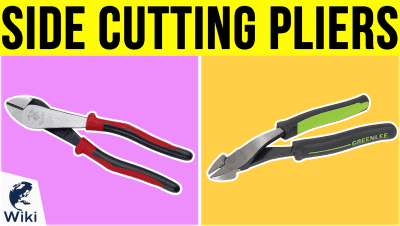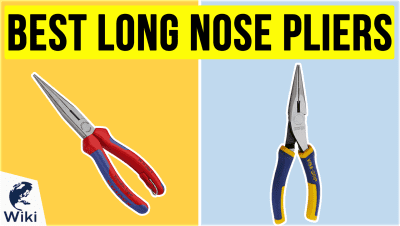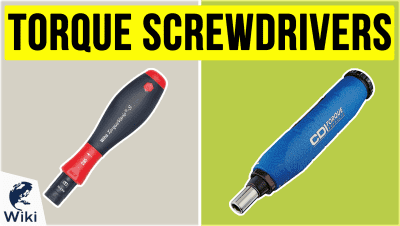The 10 Best Tool Vests

This wiki has been updated 39 times since it was first published in August of 2015. Sure, you can try and carry all your gear around in the pockets of those beaten up old cargo pants, but we wouldn't recommend it. Instead, invest in one of these quality tool vests, which come in a variety of sizes and styles and feature a range of useful pouches for storing all kinds of equipment. They'll let you hold more stuff than a belt, and more evenly distribute the weight, too. When users buy our independently chosen editorial selections, we may earn commissions to help fund the Wiki.
Editor's Notes
December 09, 2020:
As you might imagine, tool vests don't see a lot of innovation from year to year. So, it might not be that surprising that there weren't a lot of changes in our recommendations during the most recent update, which just proves that our previous choices have continued to stand the test of time and we feel even more strongly about them now than we did before. That being said, there were a couple of vests that did have to be eliminated.
The first vest we removed was the Blaklader Workwear Roughneck. While we don't have any issues with it for its intended use, namely for carrying small, lightweight items like screwdrivers, pliers, nails, and the like, it was, unfortunately, discontinued by the manufacturer. That being said, the company does make another, very similar model, the Blaklader Kangaroo Mesh, which we added in place of the Roughneck. The only noteworthy difference between these two is that the Kangaroo has a lot of mesh components, so anyone who works outside in the heat all day should appreciate it. The Holmes 10-3530 Workwear and Stanley FatMax Construction also feature a lot of mesh to help the wearer stay cool, and the Occidental Leather 2500 Stronghold SuspendaVest has an open front and back, making it, too, a good option for warm weather use.
The other model we removed was the KwikSafety Artisan. Though we appreciate its neon orange color that makes you the wearer very visible to other workers and motorists, it just had too many low-quality components that tended to fail after some time. If you are in need of a brightly-colored option for worksite safety, we recommend considering the Vest Tech High-Visibility or Radians SV55-2ZOD-L. The former offers a wide variety of loops, and closed and open pockets to keep your tools, and it even has a hydration bladder compartment. Conversely, the Radians SV55-2ZOD-L has less places to keep stuff, but is a bit more lightweight, has a tri-color design, and boasts some neck padding to prevent that area from digging into the skin when it is weighted down with gear.
December 14, 2019:
We can't tell you exactly which tool vest will best suit your needs, but we can attest to the quality of the models on this list and pretty much guarantee there will be at least one option here that will work for you.
While doing research for this update, we found that we can still stand behind almost all of our previous selections. However, there is one exception — the ToolUSA Hawk. Though we included it in our last update with the caveat that it wasn't the most durable option, we felt we could no longer recommend it to our readers due to the tendency for the zipper to break and how easily the material could be punctured.
On that note, if you often carry sharp tools and puncture resistance is very important to you, we think you will do well with the Occidental Leather 2575 Oxy Pro, Occidental Leather Stronghold 2500 SuspendaVest, Makita Worker P-72089, and Bucket Boss SuperVest 80450. All of these are made of tough materials like canvas or thick polyester that can stand up some heavy abuse.
Those who work in high-traffic or hazardous areas would probably be best served by a brightly-colored model like the Vest Tech High-Visibility, KwikSafety Artisan, and Radians SV55-2ZOD-L, since these can ensure motorists and other workers see you.
While many of the vests on this list can work for contractors in a variety of industries, we feel the Vest Tech High-Visibility is probably the best option for electricians, as it has numerous pockets that seem perfectly suited to keeping your various linesman, side-cutting, and long-nose pliers well organized.
Special Honors
Duluth Evergreen Tool Vest The Duluth Evergreen Tool Vest boasts adjustable shoulders that allow most users to get a nice fit from it. Also, it has strategically-placed pockets that should make it easy to quickly access your gear, and while we do thick it could use a few more of them, it makes up for that with the seven strong webbing loops that allow you to attach additional pouches. duluthtrading.com
Snickers Workwear Tool Vest Built tough enough to stand up to everyday use, the Snickers Tool Vest has Cordura-reinforced pockets, a material that is known for its hard-wearing properties. It also features mesh components to help you stay cool on those hot days, and an expander that allows it to be worn with jackets on cold ones. snickersworkwear.com
The Best Way To Have Tools On Hand
When you try to complete any given task with a tool not fit for the job at hand, you risk damaging the tool and ruining your project.
Any experienced contractor, mechanic, plumber, carpenter, electrician, or the dedicated DIY enthusiast will tell you that you simply must have the right tool for the job. When you try to complete any given task with a tool not fit for the job at hand, you risk damaging the tool and ruining your project.
A pair of needle nose pliers has no more business trying to grip a nut or bolt than a flathead screwdriver has being jammed into a Phillips screw, to name two of the more common examples of misused tools. When you use the wrong tool, you risk not only poor execution of the task at hand, but in fact might make more work for yourself by damaging the hardware or materials you're trying to work with.
It is with good reason that each profession has tools tailored to meet the needs that arise in their specific field. While an auto mechanic may use dozens of socket wrenches daily, these same tools might be next to useless for a carpenter, for example. Regardless of which tools you use in the course of your work or your hobbies, how you store and access your tools is an important part of their use. When you take the time to establish proper tool storage systems, you will always know where the items you need to use in your work are at a moment's notice. If you always do your work in the shop (or in your own garage or basement) then using a tool chest or drawers is a fine way to manage your hardware.
If, however, you are a professional builder or a plumber or electrician who makes regular service calls, you need to be ready with a mobile tool management system. The tool box has been the go to way for people to store and organize their tools for generations, but even a tool box can make quick and easy access of tools difficult, as the items in the box often end up jumbled about.
The best way to give yourself easy access to your tools -- and to distribute the weight of carrying all those items at the same time -- is to use a good tool vest.
Choosing The Right Tool Vest
Some tool vests are ready to accommodate everything from a cordless drill to an array of full sized hammers; others are decidedly smaller and are only suitable for hand tools like screwdrivers and pliers. The right tool vest for you is the one that puts the tools you use most often close at hand.
A great tool vest will last through years and years of regular use, so consider its purchase an investment in long term convenience.
If you only tend to work with a few tools for most projects, then by all means get a simpler, lower priced tool vest. Many budget-friendly options are more than adequate for light professional work or for the DIY hobbyist.
However, if you are a general contractor who tackles all sorts of projects, or if your specific line of work merits the use of myriad tools, you may want to consider treating yourself to a more versatile tool vest that can hold dozens of implements of varied size. A great tool vest will last through years and years of regular use, so consider its purchase an investment in long term convenience.
Don't overlook your own needs in terms of comfort and safety when buying a tool vest. Breathability is important if you work in a warm area or if you tend to sweat easily, and proper support is important for this long hours spend working.
Using Your Tool Vest
As with most aspects of life, so too is with the tool vest: safety and moderation are critical. If you try to put too many tools in your vest, you will not only weigh yourself down, but you will also end up with a cluttered and disorganized vest that makes accessing your tools a hassle instead of an easy process. It's alright to need a toolbox or tool chest as a backup storage system for those tools you use less frequently. Make sure to prioritize the tools you use the most commonly as the first ones you assign a place in your tool vest.
If need be, wiping the vest down in general and spot cleaning problem areas will suffice as well.
Always make sure to take advantage of any adjustment points your tool vest features. Making sure your vest is snug and secure on your body will maximize your comfort while reducing jostling and bouncing that might cause a tool to fall out of the vest. As a vest will tend to loosen throughout the course of the day, it's a good idea to tighten and readjust the straps from time to time, especially if your vest is heavily laden.
Take the time to clean your tool vest from time to time, ideally laundering it in a washing machine if its care instructions approve that cleaning method. If need be, wiping the vest down in general and spot cleaning problem areas will suffice as well. Regardless of how you clean your tool vest, it's important that you take the time to do so. From the sweat likely to build up on it every day to the spilled paint, solvents, and other liquids, a tool vest is exposed to lots of substances that can dirty it and that overtime can weaken the material.


